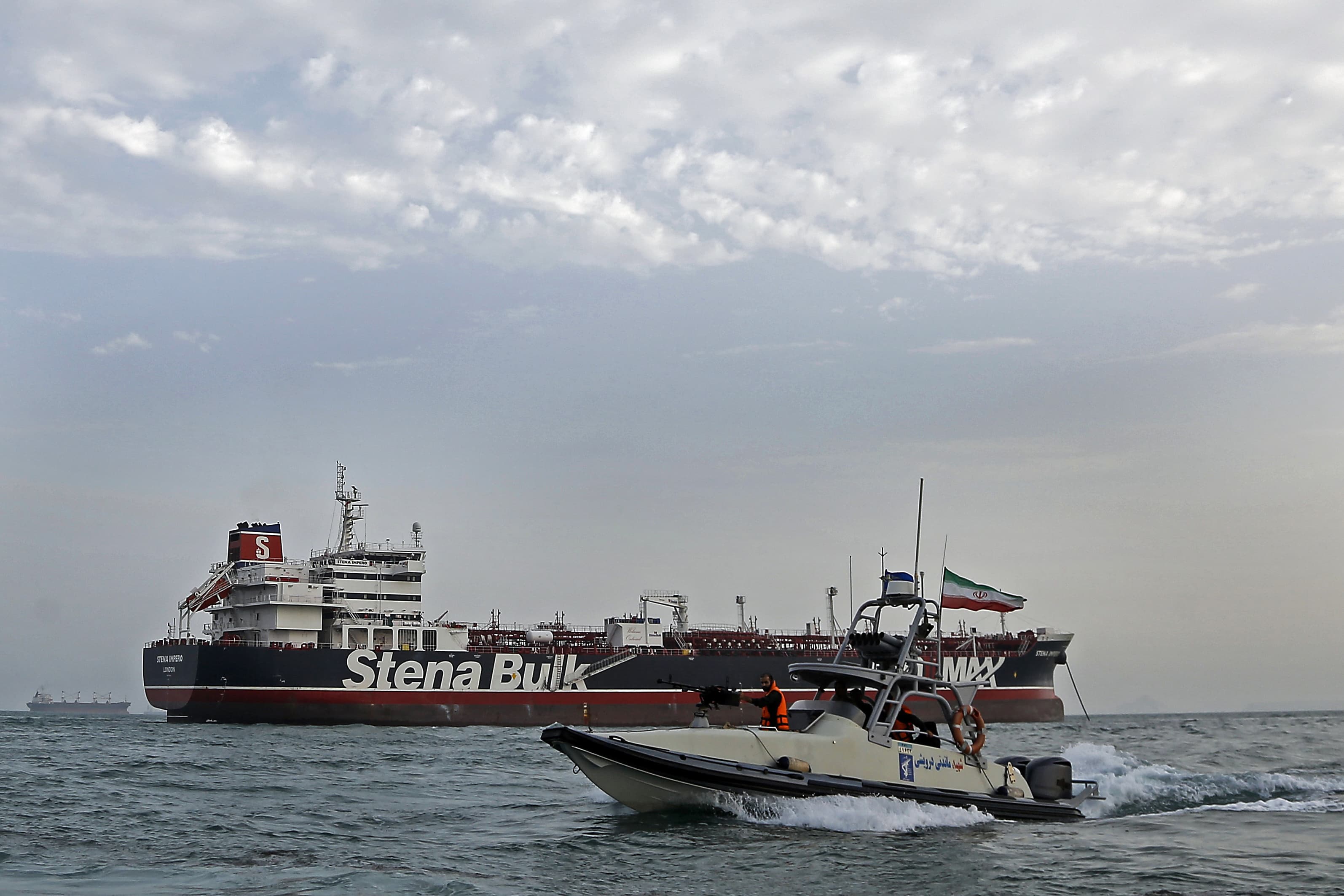Last week shows that oil prices are not the indicator for Middle East tensions they once were, and worries about global demand and growing U.S. production has changed that dynamic.
One of the energy industry’s greatest concerns has been that a Mideast conflict could disrupt oil traffic in the key Strait of Hormuz, a narrow waterway through which about a fifth of the world’s oil moves.
Yet, after Iran seized a British oil tanker Stena Impero there on Friday, for alleged marine violations, and temporarily stopped a second one, oil prices moved slightly higher, not with the velocity that might have been seen during other periods of tension.
“What I find amazing is oil has become a broken barometer for Mideast conflict. A few years ago, you could almost gauge how serious a security crisis was because of the oil price,” said Helima Croft, head of global commodities strategy at RBC.
The tanker incident comes as tensions between Iran and the West have been rising. The U.K. stopped an Iranian tanker several weeks ago that it says was violating European law and allegedly carrying crude to Syria. A Gibraltar court Friday allowed the detention of the Iranian tanker to continue, even though Iran says the ship was not heading to Syria.
Last Tuesday, oil prices had moved down dramatically on comments from Secretary of State Mike Pompeo that Iran was willing to talk about its missile program. Iran refuted that statement, and oil did not recover the losses.
“We sold off 4.5% when Pompeo suggested that the Iranians were willing to talk about the ballistic missile program. Minutes later, the Iranians said ‘no we’re not’ and oil prices still didn’t recover. Since Tuesday, it’s been nothing but escalation and oil has kind of shrugged it off,” said Croft.
Also last week, the U.S. destroyed a drone it said belonged to Iran, but Iran denied that claim. Iran did say it had seized another smaller ship it said was engaged in smuggling.
“It doesn’t mean the security situation is not terribly fraught. It does not mean that we could end up with an unintended escalation through miscalculation. It just means oil is not a leading indicator of how this crisis is going,” Croft said, adding traders are more attuned now to the trade war than a potential shooting war.
Croft said a big reason why oil traders are not driving oil prices higher is because of the huge increase in U.S. production. The U.S.has now surpassed Russia and Saudi Arabia to become the biggest oil producer. She said oil trading has also changed and the market is more computer-driven with fewer big commodities players trading it.
“The surge in U.S. production to over 12 million barrels a day has created a U.S. fire wall against these risks, or perceived risks to supply,” said John Kilduff, partner with Again Capital. “They can take all the tankers they want. We still haven’t lost any oil yet. There’s a ton of spare capacity, especially in Saudi Arabia.I think that’s what’s holding prices back.”
Kilduff said, however, he does expect oil to rise if these types of incidents continue to happen.The tanker incident follows numerous attacks by Iranian proxies on oil facilities and key infrastructure, such as an airport in Saudi Arabia.
Earlier this month, Iran admitted to shooting down a U.S. drone and the White House prepared to respond militarily. Trump called off the retaliatory response at the last minute.
“One of these incidents is going to be the straw that breaks the camel’s back,” Kilduff said. He noted that the U.S. is once more using a key Saudi airbase and has positioned patriot missile defense systems there.
Oil prices were volatile last week with international bench mark Brent crude futures down 6.4% in its worst weekly performance since December, 2018. West Texas Intermediate futures were down 7.6%, in the worst weekly performance since May. WTI started the day lower Friday, but settled up 0.6% to $55.63 per barrel, after news of the tanker seizure.
Kilduff said oil could head higher after its steep drop, as central banks gear up to provide stimulus to the global economy. The European Central Bank meets Thursday and it is expected to cut rates at that meeting or the next, in September. The Federal Reserve meets on July 30 and 31, and it is widely expected to cut interest rates.
On Monday, Iranian Foreign Minister Mohammad Javad Zarif told NBC News that Iran does not want a war, and that the door to negotiations would be wide open if Trump lifts his sanctions. The Trump administration put sanctions on Iranian oil and other parts of its economy, after the U.S. pulled out of the Joint Comprehensive Plan of Action, or the nuclear agreement made between Iran, the U.S. and five other countries.
The other parties, which include Britain, have been trying to keep Iran in the nuclear agreement. But Iran has moved to enrich more uranium at higher levels, and has said it would continue to take actions that could violate the agreement.
Kilduff said in past major conflicts, oil spiked quickly but briefly and when oil reached its all time, it was not due to a conflict.
“We got to $147 [in 2008] not because of a war but because supply was tight and the economy was in its last phase of booming,” said Kilduff.

